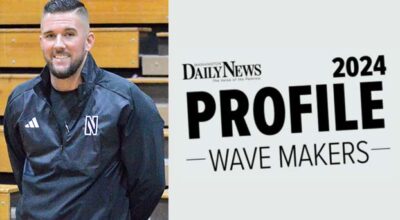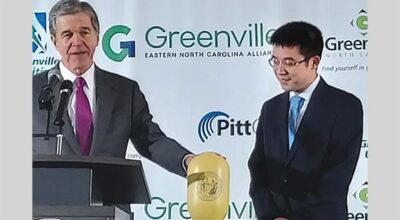Group offers storm-surge input
Published 10:34 am Thursday, April 11, 2013
Storm-surge watches and warnings likely will be linked with hurricane watches and warnings during the 2015 hurricane season, according to National Oceanic and Atmospheric Administration.
That information was provided to a group of about 15 people providing input to NOAA and the National Weather Service at a meeting at the North Carolina Estuarium in Washington on Wednesday. Most of the attendees were either emergency-management personnel or media representatives. During the past 18 months, NWS developed several prototype storm-surge maps that indicated where and how deep storm surge is expected to be in a given area during a hurricane. After some refining, NWS is preparing to use these maps for communities vulnerable to hurricanes.
NWS wants input on these maps from focus groups so it provide the maps and warning tools the media and emergency-services community needs to prepare for a hurricane and disperse storm-related information to the public.
During a hurricane, storm surge is usually the greatest threat to life and property, according to NWS, which is concerned that despite increasingly accurate storm forecasting, many coastal residents do not take protective measures for storm surge. Emergency-management personnel at the meeting said many people don’t fully understand storm surge and the danger it poses.
Storm surge is an abnormal rise of water generated by a storm, over and above the predicted astronomical tides. Storm surge should not be confused with storm tide, which is defined as the water level rise due to the combination of storm surge and the astronomical tide. This rise in water level can cause extreme flooding in coastal areas particularly when storm surge coincides with normal high tide, resulting in storm tides reaching up to 20 feet or more in some cases.
The group at the Estuarium said a storm-surge watch and storm-surge warning should be defined as a significant risk of life-threatening flooding from rapidly rising water moving inland. Under the proposal, a watch would be issued 48 hours before the expected arrival of a hurricane, with a warning issued 36 hours before the expected arrival of a hurricane.
John Pack, Beaufort County’s emergency-services director, said many Aurora-area residents learned a lesson about storm surge when Hurricane Irene came up the North Carolina coast last year.
“Several years ago, the hurricane center became quite interested in trying to figure out how to do a better job of doing storm-surge forecasting, but also storm-surge communication,” said Betty Morrow, one of the NOAA officials. “We started doing surveys to see if people understood storm surge. We found, in general, they do not.”
Morrow said the belief that the stronger a hurricane’s winds, the greater the storm surge will be. That’s not always the case, she said. Pack agreed.
Pack noted that Hurricane Irene was a category 1 storm with minimal hurricane-strength winds, but its associated storm surge caused major problems in the Aurora area and other places in eastern North Carolina.
“I think you’re well aware the National Weather Service has been considering having a separate warning for storm surge. I think it’s pretty much a done deal now. … It certainly looks like it’s going to happen,” Morrow said.






